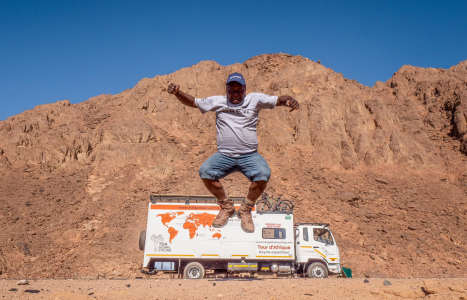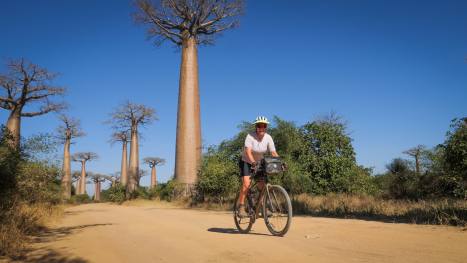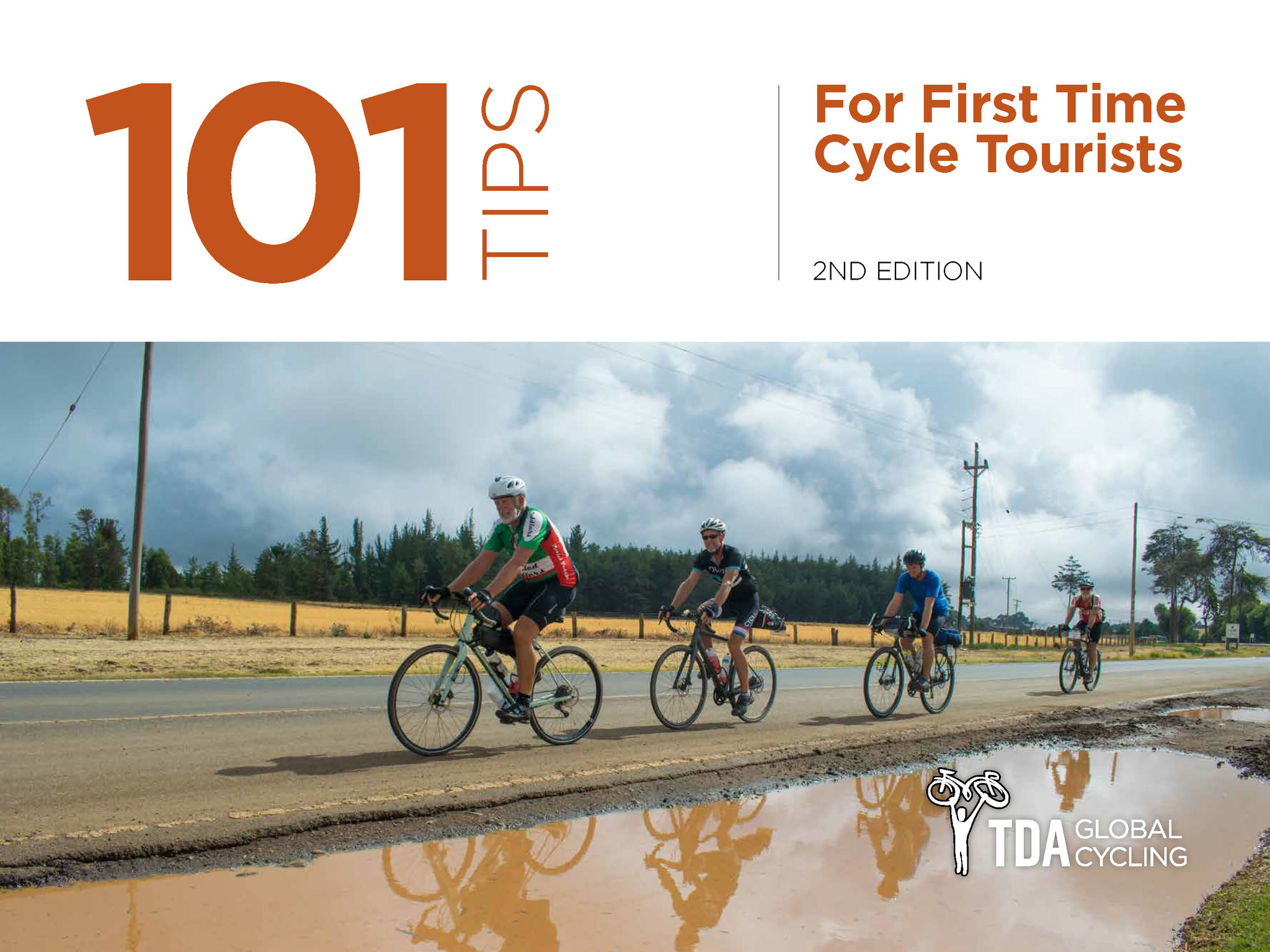Blog
Five Questionable Modes Of Transport At The Halfway Point Of Magical Madagascar
Three weeks in, TDA’s inaugural cycling tour of Madagascar is at its halfway point. After reaching Miandrivazo last week (roughly 200km south-west of Antananarivo, the nation’s capital), we ditched our bicycles in exchange for a two-day boat cruise down the Tsiribihina River.
Rather than the usual “hop on your bike and cycle LEFT out of camp” routine, after breakfast we all managed to pile into a couple of prehistoric Mazdas that looked like they’d seen better days – in fact, they looked like they’d also seen worse days, numerous scrapyards and probably two world wars. Nevertheless, they managed to conquer the 20km drive out of town to the river’s edge. That was the first questionable form of transport.

While the riders walked down to the two boats we would be relaxing on for the next two days, I was one of the lucky crew members who got to ride on top of an old tractor with all the bags as it strained and gurgled its way through the village and down to the riverside via sand dunes and overgrown pathways with branches that the driver, several locals and myself had to duck under to avoid. Sometimes the branches got us, and other times we all just had to abandon ship and jump off the tractor altogether, then run to catch up!
At no point did I have any faith that we could get this banged up old tractor with crooked wheels through this obstacle course and down to the water’s edge, much less while it was dragging a trailer holding 20 duffel bags… but miraculously, it did! That was the second questionable form of transport.
Shortly afterwards, the bags were loaded onto the two boats we had boarded (half the group on each), we pushed away from the sand and headed downriver towards the west coast of Madagascar.
These were wooden boats, with a long dining table downstairs, a kitchen at the back of the lower deck, and a shaded area upstairs with daybeds for laying down and enjoying a leisurely snooze in the breeze skimming off the water below.

It was instantly clear that this boat cruise was going to give us a glimpse at an aspect of Malagasi culture we would have struggled to see from the saddle – some locals were bathing or washing their clothes on the river’s edge, others were floating past us in the opposite direction on small (and very thin!) canoes stacked precariously high with various materials they were transporting, and others still were way out near the middle of the river, fishing in waist-deep water… this may not seem “way out”, but it is when you consider the crocodiles lurking under the water and on the rocky outer edges of the river where the cliff sides were. We spotted several crocodiles thawing out in the sun over the course of the river cruise.
In short, as peaceful as the river cruise was, there was never too much of “nothing” before we were once more sailing through a hub of activity where locals everywhere had amassed at the river to utilize it in one way or another. It was fascinating to see the countryside from this perspective – and quite a large chunk of the countryside too, considering we covered a little more than 100km on these old boats in two days from just south of Miandrivazo to Belo-Tsiribihina.
I have to admit that when I first laid eyes on the boats (still ducking and weaving around branches while I barely hung on for dear life to the most vintage tractor I’ve ever seen) they didn’t look up to the challenge. I dubbed them the third questionable form of transport, even though they ended up getting us to our final destination in a timely, safe, scenic and luxurious manner!
After lunch on the first day, we docked at a little nook carved into the cliff side that didn’t particularly look like anything special. Only once you walk 100 metres or so up a thin and sometimes indistinguishable pathway defined by half-submerged rocks and overgrown tree roots, do you come around a bend to the sight of Nosinapela Waterfall.

It’s absolutely stunning; I don’t know how else to describe it. A few of us were pretty quick to strip down to our underwear and swim over to the waterfall, which falls heavy enough on the lake below to give you a rather soothing shoulder massage if you stand directly under it.
On our way back to the boats, we were even lucky enough to feed a few of the local lemurs – these ones certainly weren’t as shy as the ones I came across in Ranomafana National Park! Perhaps because we had bananas in our hands…
After a peaceful night camping on a sandy patch beside the river, an eerie but beautiful misty dawn the following morning, a few more hours spent admiring the river’s surrounding landscapes en route to Belo-Tsiribihina, and another delicious meal on-board (the food on the boats was fantastic!), we docked and the Magical Madagascar riders made their way from the riverside to the hotel in the centre of the village, only about a 2km walk away.
I hung back with the luggage, which got hauled onto three zebu carts – I suppose I better clarify.
To borrow from Wikipedia, “zebu” = a species or subspecies of domestic cattle characterized by a fatty hump on their shoulders, a large dewlap, and sometimes drooping ears. And the “cart” = a large square wagon with giant, rickety old wagon wheels whereby all our duffel bags were loaded.
The zebu seemed to be in an aggressive mood today, and the initial departure from where we docked was peppered with grunting from the zebu, shouting between the locals, and carts getting rocked and shaken in every which way.
I walked behind these three zebu carts to make sure nothing fell off as they rumbled through town to the hotel, but we were still by the riverside when I deemed these zebu carts the fourth questionable mode of transport. Once again though, our luggage slowly but steadily made it to the hotel without any dramas!

And now, for the fifth and final questionable mode of transport during this bicycle trip across Madagascar… ironically, the bicycle.
Specifically, I’m talking about the dirt road section between Port Bac Tsimafana and the famous Avenue of the Baobabs, near Morondava. Having worked on the Tour d’Afrique immediately before this, I thought every stage of the 2017 Magical Madagascar tour was going to be a breeze after the headwinds of Sudan, the hills of Rwanda, the rocky dirt roads of Tanzania and the corrugated desert paths of Namibia.
I was in for a shock today, though… this stage was tough. The sand was so thick at some points that it was impossible to stay upright. I think the riders would all agree though that it was worth it once the 30m-tall baobabs came into view – first just one or two, then half a dozen, and eventually they were lining the road on either side. Some of these baobabs are up to 800 years old.
The fact that we cycled through the Avenue of the Baobabs towards the end of the riding day meant that most of us got to see them in the late afternoon light, as the sun was setting, which was truly spectacular.

From there, it was only another 20km or so on paved roads to the touristic coastal town of Morondava, known for its superb restaurants where you can sit with a cold beer and watch the sun set over the Mozambique Channel – the setting for our very relaxing rest day the next day.
Madagascar seems to have it all at this point. Now we head back east to Antananarivo, the capital, and onwards up to the tour’s finish line: the northernmost tip of the island, Antisiranana.
 REGISTER NOW
REGISTER NOW




Leave a Comment for "Five Questionable Modes Of Transport At The Halfway Point Of Magical Madagascar"